| Home > Tataki > Furumi Chu-Tataki Nomi (Old Unused Stock) |
|
Limited stock. Super well forged, very rare White Steel #1 by Furumi chisel blacksmith from Wakino town, Niigata. The blacksmith has retired long ago, so these are the only stock left. Very hard and tenacious from
age hardening, but not too hard to sharpen, a text book WS#1 chiesl I must say. I assume the moleclue is very finely spherodized. 30mm is the only available size unfortunately.
This White Steel #1 is the same steel that's used for a very famous plane in Japan "Sadatoki" by Kabasawa Sadao (probably totally unknown out of Japan, so don't bother googling). Sadatoki neither has mei (brand) on, looks totally plain, by the way. Good quality reasonable price plane.
These are one of the best White Steel #1 chisels I've ever come across. It is as good as Kiyohisa and Funahiro (Genjyu), and that is really something, because their chisels are in my opinion the best of the best performer in Japan at the moment.
This one, compared to Masanari, has been tempered a bit more, so it is a bit more sticky (on the stone = easier to sharpen) and tenacious, rather than slippery (harder to sharpen) and comparatively ju~~~st a bit brittle, so these and Masanari are quite different in their characteristics despite the fact that they are both made of same material. Since Chu-Tataki nomi is used more roughly compared to an Oiire nomi, I think the hardness and the tenacity of this chisel is just perfectly controlled. If it was as hard as Masanari, it would be difficult to keep it from chipping.
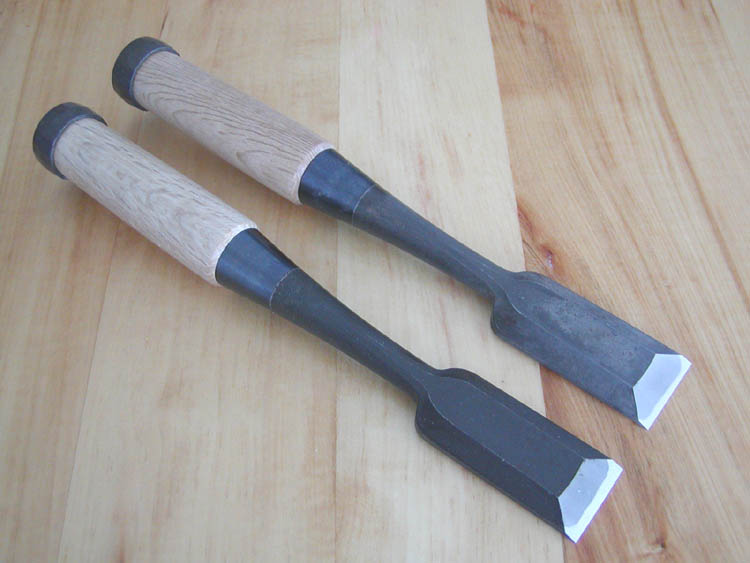
Above has been sharpened and polished to the maximum, to check the quality. First person to order can choose this one if you wish. But I will test its durability so it would be ju~~~st a bit used, but I'll make sure it'll be re-sharpened and polished so I think it would be a good choice. I'd normally charge $60 if it was ordered.
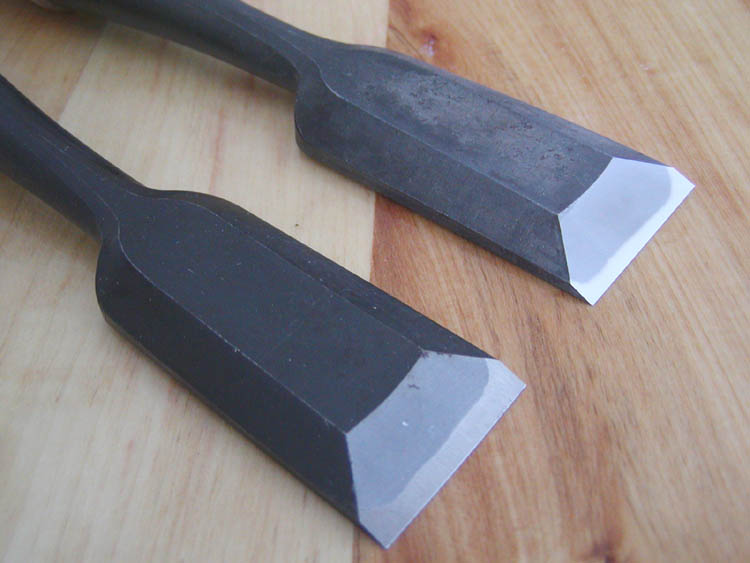
Very simple design, yet beautiful.... The filing is done meticulously, and the absence of the mei gives a very understated beauty to the chisel. Hazy finish for the one shown above. By polishing the bevel to this state with a fine finishing stone, you can clearly see the quality of the lamination, the boarder between the hagane and jigane is quite sharp, meaning it was laminated by lower heat.
White steel #1 is one of the most difficlt steel to stick to the jigane, so lesser skilled blacksmiths tend to over heat the steel because it's much easier to laminate with higher heat. You can tell if the lamination was done by high heat by checking the boarder line. If the line is clear cut, it has been laminated with low heat (the steel didn't melt into the jigane), on the other hand, if the line is hazy and the hagane has obviously melted into the jigane, it was done with higher heat. This would cause the carbon to evaporate from the steel, making it softer. This only applies to carbon steel. Alloys are much much easier to stick, so you'd rarely see a hazy lamination line with alloys. If you do, stay away from it(^^)
You can also tell the carbon content of the steel by checking the brightness of the steel. The brighter and closer to white, higher the carbon (harder), the closer to grey, the less carbon = closer to soft steel.
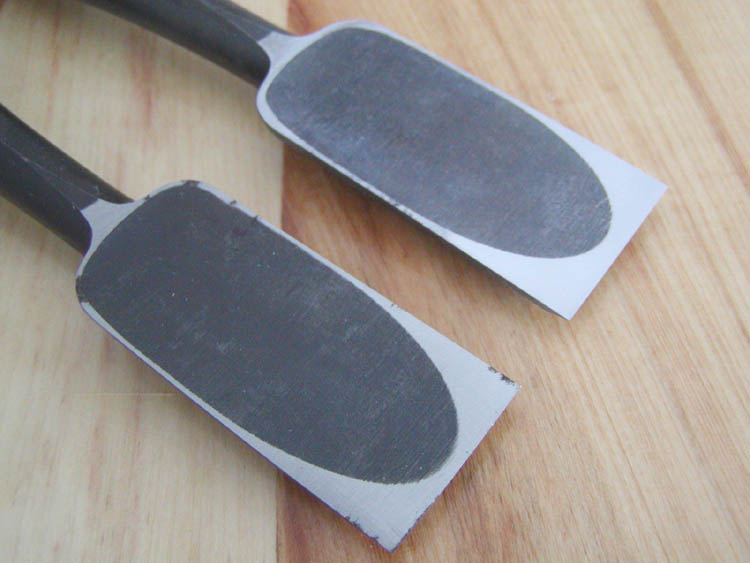
The back is polished to hazy half mirror state (above). The rust will go away once you do Uraoshi (below).
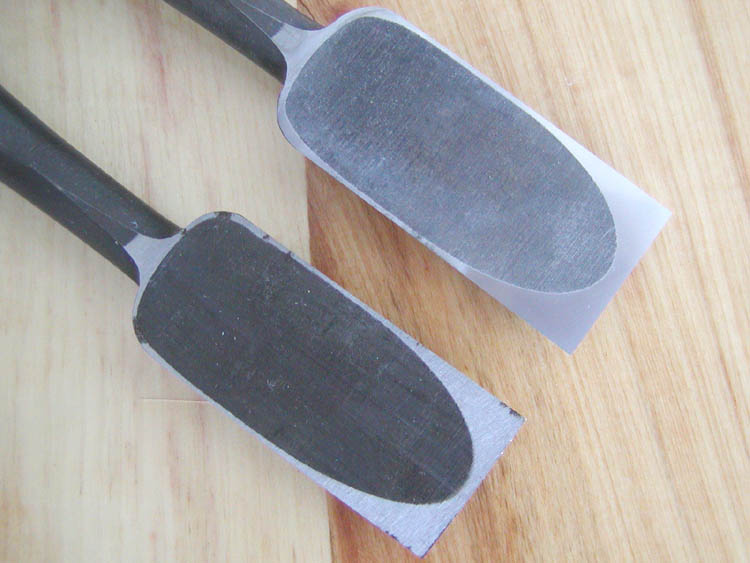
You can see better how semi hazy semi mirror like it is from this angle (above). There's a saying in Japan, "hamono wa ura de kiru" (Tools cut with their back). This is really true. Logically 50% of the performance is defined by the back's condition. No matter how much you polish the front bevel, if the back is coarse, it won't cut as much. Uraoshi is the most important process of sharpening. Keep your stones dead flat!!!!
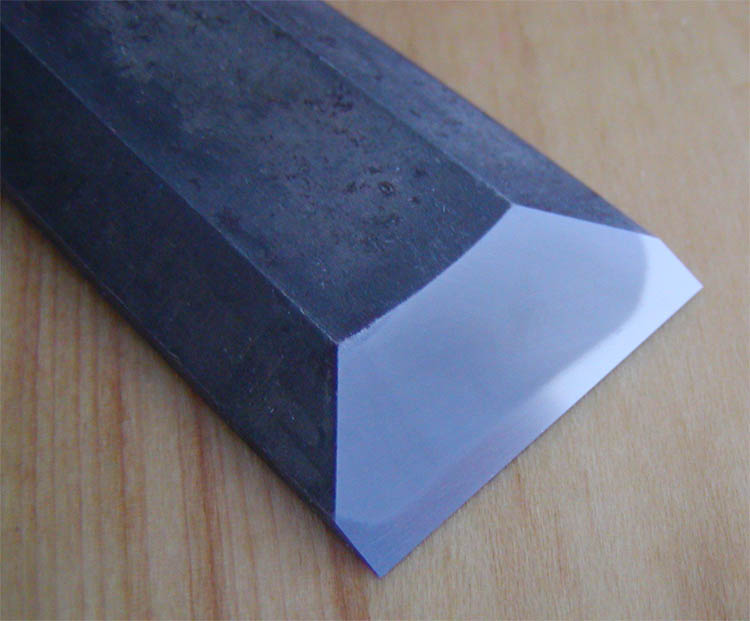
Bright hagane, and clean lamination line. Just beautiful.... Well polished with a fine Oohira Suita (my favorite daily stone).
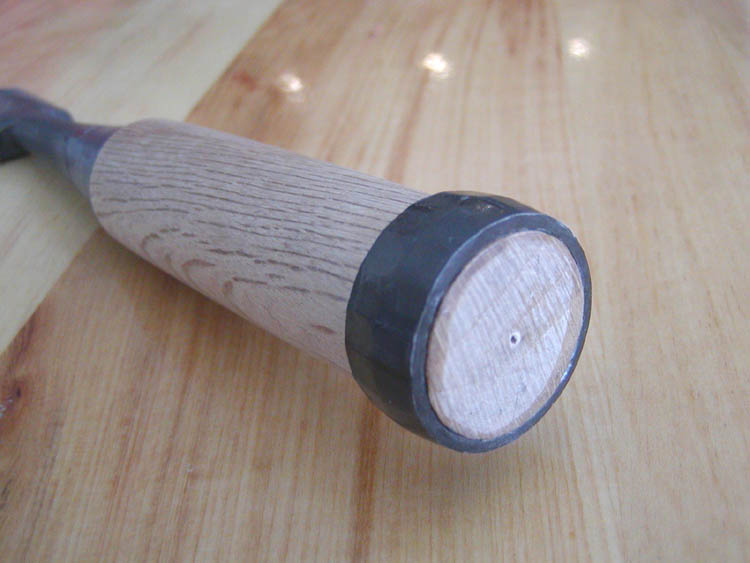
Lastly, as you can see the striking hoop isn't one of those cheap looking thin ones, and high quality white oak is used for the handle material.
Be quick for this one. I'm certain you'll be impressed by its sheer performance. Considering the price, it is very difficult to match (probably impossible).
